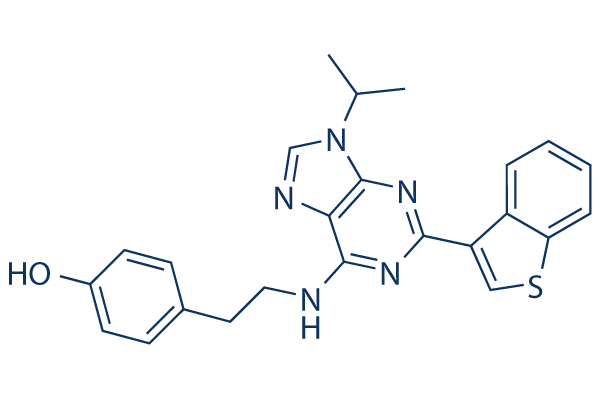| Cas No.: | 1227633-49-9 |
| Chemical Name: | SR 1,SR-1,SR1 |
| Synonyms: | SR 1,SR-1,SR1 |
| SMILES: | CC(C)N1C=NC2=C1N=C(N=C2NCCC3=CC=C(C=C3)O)C4=CSC5=CC=CC=C54 |
| Formula: | C24H23N5Os |
| M.Wt: | 429.5 |
| Sotrage: | 2 years -20°C Powder, 2 weeks 4°C in DMSO, 6 months -80°C in DMSO |
| Description: | StemRegenin 1 is a potent aryl hydrocarbon receptor (AhR) antagonist with IC50 of 127 nM. |
| In Vitro: | StemRegenin 1 (SR1) acts by antagonizing the aryl hydrocarbon receptor (AhR). StemRegenin 1 increases the number of CD34+ cells after 5 to 7 days with an EC50 of ~120 nM. StemRegenin 1 inhibits photoaffinity ligand (PAL) binding (IC50=40 nM) These results support the conclusion that StemRegenin 1 -induced CD34+ cell expansion is mediated through direct binding and inhibition of the AhR[1]. An aryl hydrocarbon receptor antagonist, StemRegenin 1 (SR1), robustly promotes ex vivo expansion of human CD34+ cells. StemRegenin 1 treatment accelerates the proliferation of CD34+ cells and decreases the expression levels of VentX[2]. |

 DC Chemicals' products qualify for U.S. tariff exemptions. We guarantee no price increases due to customs duties and maintain stable supply, continuing to deliver reliable research solutions to our American clients.
DC Chemicals' products qualify for U.S. tariff exemptions. We guarantee no price increases due to customs duties and maintain stable supply, continuing to deliver reliable research solutions to our American clients.





















